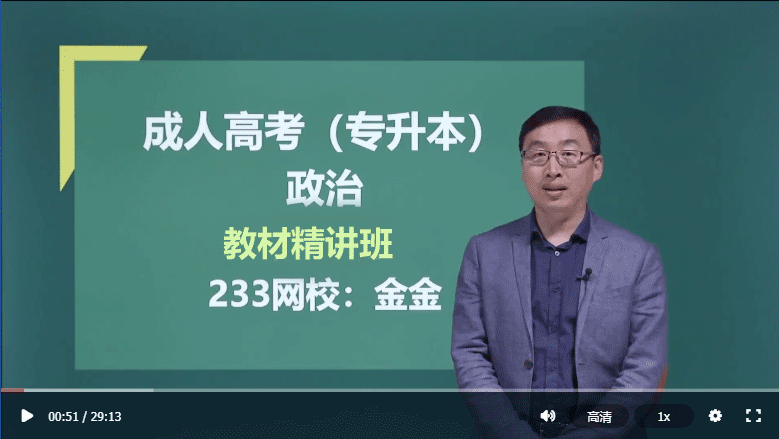жҲҗдәәй«ҳиҖғй«ҳиө·зӮ№иӢұиҜӯиҜӯжі•еҪ’зәідёҺз»ғд№ пјҲеҚҒе…«пјү
е…«гҖҒ-INGзҡ„е®ҢжҲҗж—¶гҖҒиў«еҠЁиҜӯжҖҒдёҺеҗҰе®ҡеҪўејҸ
1. еҰӮжһң-INGеҲҶиҜҚиЎЁзӨәзҡ„жҳҜдёҖиҲ¬жҖ§еҠЁдҪңпјҢпјҲеҚідёҚжҢҮжҳҺжҳҜзҺ°еңЁгҖҒиҝҮеҺ»жҲ–е°ҶжқҘпјүдёҚиЎЁзӨәеҠЁдҪңзҡ„е…ҲеҗҺжҲ–дёҺи°“иҜӯжүҖиЎЁзӨәзҡ„еҠЁдҪңеҗҢж—¶жҲ–еҮ д№ҺеҗҢж—¶еҸ‘з”ҹпјҢиҝҷж—¶иҰҒз”Ё-INGзҡ„дёҖиҲ¬еҪўејҸ
35пјү Revolution means the productive forces.
пј»AпјҪ to liberate
пј»BпјҪ to have liberated
пј»CпјҪ liberating
пј»DпјҪ having been liberated
36пјү It is a simple matter пј»AпјҪ to have found пј»BпјҪ the density of a gas пј»CпјҪ from its formula пј»DпјҪ .
2. дҪҶеҰӮжһң-INGеҲҶиҜҚжүҖиЎЁзӨәзҡ„еҠЁдҪңе…ҲдәҺеҸҘеӯҗи°“иҜӯеҸ‘з”ҹпјҢе°ұиҰҒз”ЁвҖңпјҲnotпјүhaving+-EDеҲҶиҜҚвҖқиЎЁзӨәе®ҢжҲҗж—¶
37пјү by the journeyпјҢ he went to bed immediately after he came back home.
пј»AпјҪ Being exhausted
пј»BпјҪ To have exhausted
пј»CпјҪ Having exhausted
пј»DпјҪ Having been exhausted
38пјү with an accedentпјҢ he arrived at the station ten minutes late.
пј»AпјҪ Having met
пј»BпјҪ To have met
пј»CпјҪ Meeting
пј»DпјҪ Having been met
3. еҪ“йқһйҷҗе®ҡжҖ§еҠЁиҜҚ-INGзҡ„йҖ»иҫ‘дё»иҜӯжҳҜ-INGжүҖиЎЁзӨәзҡ„еҠЁдҪңеҜ№иұЎж—¶иҰҒз”Ё-INGзҡ„иў«еҠЁеҪўејҸпјҢеҢ…жӢ¬е…¶дёҖиҲ¬еҪўејҸвҖңпјҲnotпјүbeing + -EDеҲҶиҜҚе’Ңе®ҢжҲҗеҪўејҸвҖқпјҲnotпјүhaving been +-EDеҲҶиҜҚвҖң
39пјү SolidsпјҢ liquidsпјҢ and gases at rest all have a tendency to resist in motion.
пј»AпјҪ setting
пј»BпјҪ to set
пј»CпјҪ being set
пј»DпјҪ to be set
40пјү Upon questioning пј»AпјҪ he denied having killed пј»BпјҪ the old woman with пј»CпјҪ the home-made пј»DпјҪ gun.
4. -INGзҡ„еҗҰе®ҡеҪўејҸжҳҜжҠҠnotеҠ еңЁ-INGзҡ„еүҚиҫ№
41пјү of the change in the meeting timeпјҢ Mike arrived late.
пј»AпјҪ Not having notified
пј»BпјҪ Not notifying
пј»CпјҪ Not to notify
пј»DпјҪ Not having been notified
42пјү I regret hard at school.
пј»AпјҪ not to have worked
пј»BпјҪ not having worked
пј»CпјҪ not have worked
пј»DпјҪ having not worked
д№қгҖҒ-INGеҲҶиҜҚзҡ„йҖ»иҫ‘дё»иҜӯ
1. -INGеҲҶиҜҚйҷӨдәҶе…·жңүеҠЁиҜҚзҡ„зү№зӮ№д»ҘеӨ–пјҢе®ғиҝҳжңүеҗҚиҜҚзҡ„зү№зӮ№пјҢеҚіеҸҜд»ҘеҠ зү©дё»д»ЈиҜҚпјҲеҰӮmyпјҢyourпјҢhisзӯүпјүе’ҢеҗҚиҜҚзҡ„еұһж јпјҲеҰӮWang Qing'sзӯүпјүжқҘиЎЁзӨәе…¶йҖ»иҫ‘дё»иҜӯпјҲиҝҷж—¶-INGзҡ„йҖ»иҫ‘дё»иҜӯе’ҢеҸҘеӯҗдё»иҜӯдёҚдёҖиҮҙпјү
43пјү I suggest on an excursion this Sunday.
пј»AпјҪ we are going
пј»BпјҪ to go
пј»CпјҪ us going
пј»DпјҪ our going
44пјү on a clear dayпјҢ far from the city crowdsпјҢ the mountains give him a sense of infinite peace.
пј»AпјҪ If walking
пј»BпјҪ While walking
пј»CпјҪ Walking
пј»DпјҪ When one is walking
45пјү Marta пј»AпјҪ being chosen пј»BпјҪ as the most outstanding пј»CпјҪ student on her campus made her parents пј»DпјҪ very happy.
2. иҝҳжңүдёҖз§Қ-INGеҲҶиҜҚзҡ„йҖ»иҫ‘дё»иҜӯдёҺеҸҘеӯҗдё»иҜӯдёҚдёҖиҮҙзҡ„жғ…еҶөпјҢиҝҷж—¶зӣҙжҺҘеҸҜз”ЁвҖң-INGеҲҶиҜҚзҡ„дё»иҜӯпјӢ-INGвҖқжқҘиЎЁзӨәпјҢиҝҷж ·зҡ„-INGеҲҶиҜҚзҹӯиҜӯеҸҜз”ұд»ӢиҜҚеј•еҜјгҖӮиҝҷз§Қз»“жһ„еҸ«зӢ¬з«Ӣз»“жһ„
46пјү A new technique пјҢ the yields as a whole increased by 20 percent.
пј»AпјҪ to have been worked out
пј»BпјҪ having worked out
пј»CпјҪ working out
пј»DпјҪ having been worked out
47пјү Walter offered us a lift when he was leaving the officeпјҢ but our work пјҢ we declined the offer.
пј»AпјҪ not being finished
пј»BпјҪ not having finished
пј»CпјҪ had not been finished
пј»DпјҪ was not finished
3. еҰӮжһңйҖ»иҫ‘дё»иҜӯе·Іе’ҢеҸҘеӯҗдё»иҜӯдёҖиҮҙпјҢйӮЈд№Ҳе…¶йҖ»иҫ‘дё»иҜӯе°ұеҸҜзңҒз•ҘпјҲеңЁдҪҝз”Ёиҝҷз§Қз”Ёжі•ж—¶иҰҒжіЁж„Ҹпјҡ-INGеҲҶиҜҚжүҖиЎЁзӨәзҡ„еҠЁдҪң[ZZпјҲ]дёҖе®ҡ[ZZпјү]жҳҜдё»иҜӯжүҖеҸ‘еҮәзҡ„пјҢд№ҹе°ұжҳҜиҜҙ-INGеҲҶиҜҚзҡ„йҖ»иҫ‘дё»иҜӯ[ZZпјҲ]дёҖе®ҡ[ZZпјү]жҳҜдё»еҸҘзҡ„дё»иҜӯгҖӮиҜ•жҜ”иҫғдёӢеҲ—еҸҘеӯҗпјү
Getting into the roomпјҢ I smelled a terrible smell.пјҲgetting жҳҜ I зҡ„еҠЁдҪңпјү
Getting into the roomпјҢ it give a terrible smell. пјҲй”ҷиҜҜпјү
Walking through the forestпјҢ we found many strange animals. пјҲwalking жҳҜ we еҸ‘еҮәзҡ„пјү
Walking through the forestпјҢ a lot of animals are there. пјҲй”ҷиҜҜпјү
Looking out of the window of our hotel roomпјҢ we saw zigzag mountains. пјҲLookingзҡ„дҪҝеҠЁиҖ…жҳҜweпјү
Looking out of the window of our hotel roomпјҢ there were zigzag mountians.пјҲй”ҷиҜҜпјү
48пјү Never attempting to be a literary stylistпјҢ in her novels.
пј»AпјҪ she considered the plot the most important element
пј»BпјҪ the most important element considered to be the plot
пј»CпјҪ considering the plot the most important element
пј»DпјҪ the plot was considered to be the most important element
49пјү with the new methodпјҢ the material does not break up easily.
пј»AпјҪ To have treated
пј»BпјҪ Having treated
пј»CпјҪ Being treated
пј»DпјҪ Having been treated
50пјү Attempting to reach his home before the stormпјҢ .
пј»AпјҪ the bicycle of John broke down
пј»BпјҪ it happened that John's bike broke down
пј»CпјҪ the storm caught John
пј»DпјҪ John had an accident on his bicycle
4. -INGеҲҶиҜҚзҡ„дё»иҜӯеҸҜд»ҘдёҺеҒҡдё»иҜӯзҡ„еҗҚиҜҚжҲ–д»ЈиҜҚпјҲеҚід»ЈиҜҚзҡ„дё»ж јпјүдёҖиҮҙпјҢж”ҫеңЁ-INGеүҚиҫ№пјҢдёҺ
-INGеҲҶиҜҚжһ„жҲҗйҖ»иҫ‘дёҠзҡ„вҖңдё»и°“вҖқе…ізі»гҖӮдҪҶжҳҜпјҢ-INGеҲҶиҜҚпјҲиҝҳжңү-EDеҲҶиҜҚпјүзҹӯиҜӯдҪңзҠ¶иҜӯж—¶пјҢд№ҹеҸҜд»ҘжңүиҮӘе·ұзӢ¬з«Ӣзҡ„йҖ»иҫ‘дёҠзҡ„вҖңдё»иҜӯвҖқгҖӮиҝҷз§Қз»“жһ„дёҺдё»еҸҘдёҚеҸ‘з”ҹеҸҘжі•дёҠзҡ„иҒ”зі»пјҢеҸ«еҒҡзӢ¬з«Ӣз»“жһ„гҖӮеңЁеҫҲеӨҡжғ…еҶөдёӢе®ғйғҪзӣёеҪ“дәҺеҗ„з§ҚеҪўејҸзҡ„зҠ¶иҜӯпјҢиЎЁзӨәдёҖз§ҚдјҙйҡҸзҡ„еҠЁдҪңжҲ–жғ…еҶө
51пјү Weather пјҢ we'll go sightseeing.
пј»AпјҪ permitted
пј»BпјҪ is permitted
пј»CпјҪ permitting
пј»DпјҪ is permitting
52пјү There are four factories in our instituteпјҢ .
пј»AпјҪ each to have over 100 workers
пј»BпјҪ each having over 100 worders
пј»CпјҪ which there are over 100 workers
пј»DпјҪ with each that has over 100 workers
53пјү We went to пј»AпјҪ the World ParkпјҢ Xiao Wang act пј»BпјҪ as guide for пј»CпјҪ he had been there several times пј»DпјҪгҖӮ
еҚҒгҖҒд№ жғҜз”Ёжі•
1. There is no +-INGеҲҶиҜҚпјҢиЎЁзӨәвҖңдёҚеҸҜиғҪвҖқ
There is no getting along with him.пјҲж— жі•е’Ңд»–зӣёеӨ„гҖӮпјү
2. ItпјҲThereпјү is no use пјҲgoodпјү +-INGеҲҶиҜҚпјҢиЎЁзӨәвҖңж— з”ЁвҖқ= It is of no use пјҲgoodпјү to +Vпјҡ
ThereпјҲItпјү is no use advising him to give up smoking.пјҲеҠқд»–жҲ’зғҹжҳҜеҫ’еҠізҡ„гҖӮпјү
3. be busyпјҲworthпјү+-INGеҲҶиҜҚ пјҲеҝҷдәҺпјү
He is busy mapping out his plans for the next semester.
4. feel like+-INGеҲҶиҜҚ пјҲжғіпјү
I don't feel like eating just now.пјҲжҲ‘зҺ°еңЁдёҚжғіеҗғгҖӮпјү
5. What do you say to+-INGеҲҶиҜҚпјҹпјҲвҖҰжҖҺд№Ҳж ·пјҹпјү
What do you say to joining us for dinnerпјҹпјҲе’ҢжҲ‘们дёҖиө·иҝӣйӨҗпјҢдҪ зңӢжҖҺд№Ҳж ·пјҹпјү
6. spend+ж—¶й—ҙ+пјҲinпјү+-INGеҲҶиҜҚ
Jane spent several days пјҲinпјү preparing for the final exams.пјҲз®ҖиҠұдәҶеҘҪеҮ еӨ©ж—¶й—ҙеҮҶеӨҮжңҹжң«иҖғиҜ•гҖӮпјү7.
difficulty
trouble
have +a problem+пјҲinпјү+ -INGеҲҶиҜҚ
a goodпјҲhardпјү time
fun пјҲеҝ«д№җпјү
54пјү The student had пј»AпјҪ difficulty to write пј»BпјҪ a short paragraph пј»CпјҪ correctly пј»DпјҪ .
55пјү I imagine that пј»AпјҪ I could go to the theater again and have just as good a time пј»BпјҪ not try to пј»CпјҪ think of an opening sentence пј»DпјҪ .
еҚҒдёҖгҖҒдҫӢйўҳи§Јжһҗ
1пјү BдёәжӯЈзЎ®зӯ”жЎҲгҖӮ2пјү DдёәжӯЈзЎ®зӯ”жЎҲгҖӮ3пјү CдёәжӯЈзЎ®зӯ”жЎҲгҖӮ
4пјү Bй”ҷгҖӮ ж”№дёәto determineпјҢе…ідәҺеҠЁиҜҚдёҚе®ҡејҸдёҺ-INGеҲҶиҜҚзҡ„еҢәеҲ«иҜ·еҸӮи§Ғ第дёғз« вҖңе°Ҹз»“вҖқгҖӮ
5пјү DдёәжӯЈзЎ®зӯ”жЎҲгҖӮ6пјү BдёәжӯЈзЎ®зӯ”жЎҲгҖӮ7пјү AдёәжӯЈзЎ®зӯ”жЎҲгҖӮ8пјү Bй”ҷгҖӮж”№дёәusing.9пјү Aй”ҷгҖӮж”№дёәbringing.
10пјү CдёәжӯЈзЎ®зӯ”жЎҲгҖӮ
11пјү BдёәжӯЈзЎ®зӯ”жЎҲгҖӮвҖңstartпјӢдёҚе®ҡејҸвҖқдёҺвҖңstartпјӢ-INGвҖқжңүжүҖдёҚеҗҢпјҢеүҚиҖ…иЎЁзӨәе…·дҪ“еҠЁдҪңпјҢеҗҺиҖ…иЎЁзӨәдёҖиҲ¬жҖ§еҠЁдҪңжҲ–зҠ¶жҖҒгҖӮ
12пјү Cй”ҷгҖӮж”№дёәcomparing.13пјү Bй”ҷгҖӮж”№дёәher going.
14пјү Cй”ҷгҖӮж”№дёәto keeping.be committed toпјӢеҗҚиҜҚжҲ–-INGеҲҶиҜҚпјҢж„ҸдёәвҖңеҗҢж„ҸжүҝжӢ…пјҢзӯ”еә”пјҲе№ІжҹҗдәӢжҲ–ж”ҜжҢҒжҹҗдәӢпјүгҖӮвҖқ
15пјү Aй”ҷгҖӮ ж”№дёәyour leaving.16пјү BдёәжӯЈзЎ®зӯ”жЎҲгҖӮ17пјү AдёәжӯЈзЎ®зӯ”жЎҲгҖӮ18пјү Cй”ҷгҖӮж”№дёәto living.
19пјү Cй”ҷгҖӮ ж”№дёәgiving.20пјү AдёәжӯЈзЎ®зӯ”жЎҲгҖӮ21пјү CдёәжӯЈзЎ®зӯ”жЎҲгҖӮ22пјү AдёәжӯЈзЎ®зӯ”жЎҲгҖӮ
23пјү Cй”ҷгҖӮж”№жҲҗвҖңgrowingвҖқгҖӮжң¬еҸҘдёӯе…ҲеҗҺеҮәзҺ°дәҶдёӨдёӘеҠЁиҜҚпјҢвҖңgrowвҖқе’ҢвҖңisвҖқпјҢиҝҷжҳҫ然дёҚеҗҲиҜӯжі•гҖӮе°ҶвҖңgrowвҖқеҸҳдёәвҖңgrowingвҖқеҗҺдҫҝжһ„жҲҗдәҶ-INGзҹӯиҜӯпјҢдҝ®йҘ°вҖңtreesвҖқгҖӮпј»еҸӮи§Ғ第е…ӯз« пјҪ
24пјү BдёәжӯЈзЎ®зӯ”жЎҲгҖӮstealingиЎЁзӨәжӯЈеңЁиҝӣиЎҢгҖӮ25пјү Dй”ҷгҖӮж”№дёәasking.26пјү DдёәжӯЈзЎ®зӯ”жЎҲгҖӮ27пјү BдёәжӯЈзЎ®зӯ”жЎҲгҖӮ
28пјү Aй”ҷгҖӮж”№жҲҗвҖңBeing a dancerвҖқгҖӮ29пјү AдёәжӯЈзЎ®зӯ”жЎҲгҖӮ30пјү BдёәжӯЈзЎ®зӯ”жЎҲгҖӮ31пјү AдёәжӯЈзЎ®зӯ”жЎҲгҖӮ
32пјү BдёәжӯЈзЎ®зӯ”жЎҲгҖӮжң¬еҸҘз©әзҷҪеӨ„зјәиғҪиө·е®ҡиҜӯдҪңз”Ёзҡ„иҜҚпјҢз”ЁжқҘдҝ®йҘ°еүҚйқўзҡ„еҗҚиҜҚpaintings.
33пјү BдёәжӯЈзЎ®зӯ”жЎҲгҖӮжң¬еҸҘз©әзҷҪеҗҺйқўзҡ„жҲҗеҲҶдёә-INGзҹӯиҜӯпјҢзӣёеҪ“дәҺвҖңwhich meansвҖҰвҖқгҖӮC иЎЁйқўдёҠжӯЈзЎ®пјҢдҪҶиӢұиҜӯдёӯжІЎжңүиҝһжҺҘиҜҚиҝһжҺҘзҡ„дёӨдёӘеҲҶеҸҘжҳҜдёҚиғҪжҲҗз«Ӣзҡ„пјҢдҪҶжҲ‘们еҸҜд»ҘиҜҙвҖңwhich meansвҖқпјҢз”ЁвҖңwhichвҖқжҢҮд»ЈвҖңNebrathkaвҖқгҖӮдҪҶиҝҷж ·е°ұеҸҳжҲҗйқһйҷҗе®ҡжҖ§е®ҡиҜӯд»ҺеҸҘдәҶгҖӮ
34пјү AдёәжӯЈзЎ®зӯ”жЎҲгҖӮжң¬еҸҘзӣёеҪ“дәҺдёҖдёӘйқһйҷҗе®ҡжҖ§е®ҡиҜӯд»ҺеҸҘпјҲwhich amounts toвҖҰпјүпјҢamountпјҲжҖ»и®Ўпјү -дёҚеҸҠзү©еҠЁиҜҚпјҢж•…жІЎжңү-EDеҲҶиҜҚгҖӮ 35пјү CдёәжӯЈзЎ®зӯ”жЎҲгҖӮ36пјү Bй”ҷгҖӮ ж”№дёәto find.37пјү DдёәжӯЈзЎ®зӯ”жЎҲгҖӮ38пјү AдёәжӯЈзЎ®зӯ”жЎҲгҖӮ39пјү CдёәжӯЈзЎ®зӯ”жЎҲгҖӮ
40пјү Aй”ҷгҖӮUpon being questioned.41пјү DдёәжӯЈзЎ®зӯ”жЎҲгҖӮ
42пјү BдёәжӯЈзЎ®зӯ”жЎҲгҖӮ
43пјү DдёәжӯЈзЎ®зӯ”жЎҲгҖӮ
44пјү DдёәжӯЈзЎ®зӯ”жЎҲгҖӮ
45пјү Aй”ҷгҖӮж”№дёәMarta's.
46пјү DдёәжӯЈзЎ®зӯ”жЎҲгҖӮ
47пјү AдёәжӯЈзЎ®зӯ”жЎҲгҖӮ
48пјү AдёәжӯЈзЎ®зӯ”жЎҲгҖӮ
49пјү DдёәжӯЈзЎ®зӯ”жЎҲгҖӮ
50пјү DдёәжӯЈзЎ®зӯ”жЎҲгҖӮ
51пјү CдёәжӯЈзЎ®зӯ”жЎҲгҖӮ
52пјү BдёәжӯЈзЎ®зӯ”жЎҲгҖӮ
53пјү Bй”ҷгҖӮж”№дёәacting.
54пјү Bй”ҷгҖӮж”№дёәwriting.
55пјү Cй”ҷгҖӮж”№дёәtrying to.
иҖғиҜ•еӨ§зј–иҫ‘ж•ҙзҗҶ
зӣёе…іжҺЁиҚҗ
- 2017е№ҙжҲҗдәәй«ҳиҖғй«ҳиө·зӮ№иӢұиҜӯиҖғиҜ•иҫ…еҜј:д»ӢиҜҚзҹӯиҜӯ04-10
- 2017е№ҙжҲҗдәәй«ҳиҖғй«ҳиө·зӮ№иӢұиҜӯиҖғиҜ•еҺҶе№ҙзңҹйўҳдҪңж–ҮзІҫйҖүжұҮжҖ»04-04
- 2017е№ҙжҲҗдәәй«ҳиҖғй«ҳиө·зӮ№иӢұиҜӯиҖғиҜ•еҺҶе№ҙзңҹйўҳдҪңж–ҮзІҫйҖүеҚҒдёү04-03
- 2017е№ҙжҲҗдәәй«ҳиҖғй«ҳиө·зӮ№иӢұиҜӯиҖғиҜ•еҺҶе№ҙзңҹйўҳдҪңж–ҮзІҫйҖүеҚҒдәҢ04-02
- 2017е№ҙжҲҗдәәй«ҳиҖғй«ҳиө·зӮ№иӢұиҜӯиҖғиҜ•еҺҶе№ҙзңҹйўҳдҪңж–ҮзІҫйҖүеҚҒдёҖ04-01
| ҝОіМЧЁТөГыіЖ | ҪІКҰ | ФӯјЫ/УЕ»ЭјЫ | Гв·СМеСй | ұЁГы |
|---|---|---|---|---|
| УпОД(ёЯЖрөг)ҫ«ҪІ°а | өЛҫэГД | ЈӨ150 / ЈӨ150 |  |
ұЁГы |
| УўУп(ёЯЖрөг)ҫ«ҪІ°а | Monica | ЈӨ150 / ЈӨ150 |  |
ұЁГы |
| КэС§(ОД)ҫ«ҪІ°а | Нх·ј | ЈӨ150 / ЈӨ150 |  |
ұЁГы |
| КэС§(Ан)ҫ«ҪІ°а | ВЮУЧЦҘ | ЈӨ150 / ЈӨ150 |  |
ұЁГы |
| ҙуС§УпОД(ЧЁЙэұҫ)ҫ«ҪІ°а | Е·Сф°ШБШ | ЈӨ150 / ЈӨ150 |  |
ұЁГы |
| УўУп(ЧЁЙэұҫ)ҫ«ҪІ°а | Monica | ЈӨ150 / ЈӨ150 |  |
ұЁГы |
| ёЯөИКэС§(Т»)(ЧЁЙэұҫ)ҫ«ҪІ°а | НхМО | ЈӨ150 / ЈӨ150 |  |
ұЁГы |
| ёЯөИКэС§(¶ю)(ЧЁЙэұҫ)ҫ«ҪІ°а | ВЮУЧЦҘ | ЈӨ150 / ЈӨ150 |  |
ұЁГы |
ёЁөјҝОіМ
- ёЯЖрөг-КэС§(ОДК·ІЖҫӯАа)

- Нх·јАПКҰ
 Гв·СКФМэ
Гв·СКФМэ
- ёЯЖрөг-УўУп

- MonicaАПКҰ
 Гв·СКФМэ
Гв·СКФМэ
- ЧЁЙэұҫ-ҙуС§УпОД

- Е·Сф°ШБШАПКҰ
 Гв·СКФМэ
Гв·СКФМэ
°ај¶ҪйЙЬ
МЧІН°ьә¬ЈәЧЁЙэұҫVIP°а/ёЯЖрөгVIP°аЈЁә¬ҫ«ҪІ+ХжМвҪвОц+ДЈҝјөгМв)
МЧІНУЕКЖЈә1ЎўЛш¶ЁәЛРДҝјөг
2ЎўҝјЗ°·ў·Е2МЧКФМв
3ЎўГв·СЦШС§Т»ҙОұЈХП
ЕдМЧ·юОсЈә1ЎўГв·СМвҝв
2ЎўҝОіМҪІТе+ҝОјюПВФШ+ТЖ¶ҜҝОМГ







 Гв·СКФМэ
Гв·СКФМэ 




